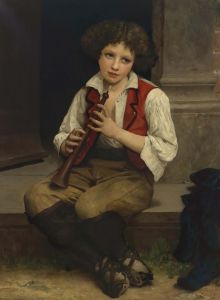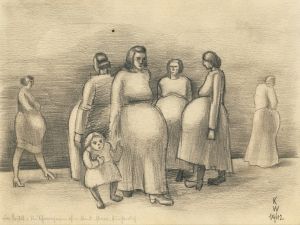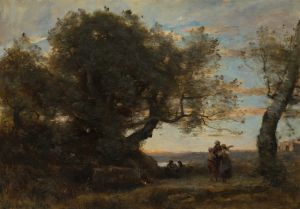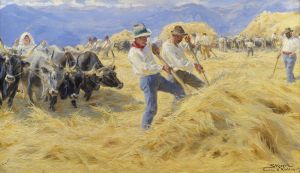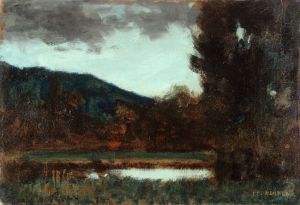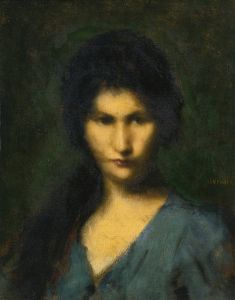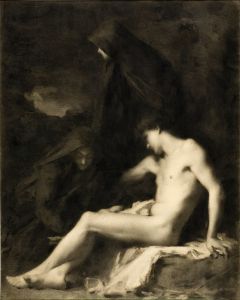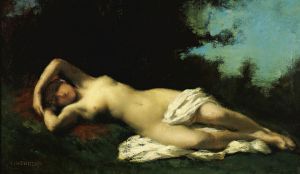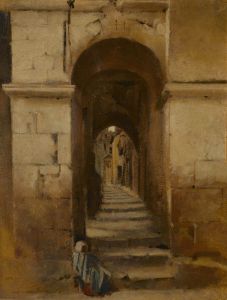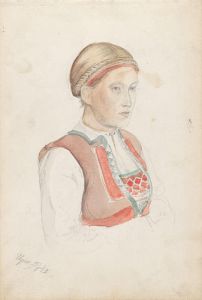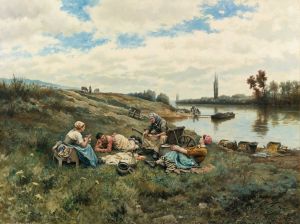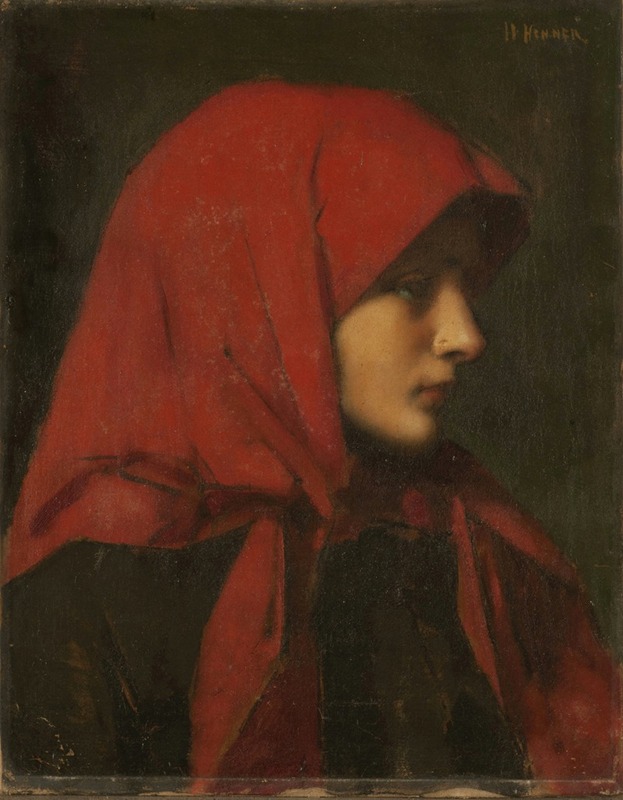
Paysanne
A hand-painted replica of Jean-Jacques Henner’s masterpiece Paysanne, meticulously crafted by professional artists to capture the true essence of the original. Each piece is created with museum-quality canvas and rare mineral pigments, carefully painted by experienced artists with delicate brushstrokes and rich, layered colors to perfectly recreate the texture of the original artwork. Unlike machine-printed reproductions, this hand-painted version brings the painting to life, infused with the artist’s emotions and skill in every stroke. Whether for personal collection or home decoration, it instantly elevates the artistic atmosphere of any space.
Jean-Jacques Henner's Paysanne is a painting created by the French artist, who was renowned for his mastery of portraiture and his use of soft, atmospheric lighting. Henner (1829–1905) was a prominent figure in 19th-century French art, associated with the Academic tradition, and his works often depicted idealized figures, religious themes, and rural subjects.
The title Paysanne, which translates to "Peasant Woman" in English, suggests that the painting portrays a rural woman, a subject that Henner frequently explored in his career. His depictions of rural life often carried a sense of timelessness and simplicity, reflecting the Romanticized view of the countryside that was popular in 19th-century art. Henner's works are characterized by their delicate brushwork, subtle use of color, and an emphasis on the interplay of light and shadow, all of which contribute to the dreamlike quality of his paintings.
While specific details about Paysanne are limited, it is consistent with Henner's broader body of work, which often focused on the human figure. His portraits and figure studies typically emphasize the natural beauty and dignity of his subjects, often set against dark, neutral backgrounds that draw attention to the sitter. Henner's technique involved layering glazes to achieve a luminous effect, a hallmark of his style.
Henner was trained at the École des Beaux-Arts in Paris and won the prestigious Prix de Rome in 1858, which allowed him to study in Italy. His time in Italy greatly influenced his artistic development, particularly his admiration for the works of the Old Masters, such as Titian and Correggio. This influence is evident in the classical composition and refined execution of his paintings, including Paysanne.
Today, Henner's works are celebrated for their technical excellence and their ability to evoke a sense of quiet introspection. Many of his paintings, including Paysanne, are housed in museums and private collections around the world. The Musée Jean-Jacques Henner in Paris is dedicated to his life and work, offering a comprehensive view of his artistic legacy.
Due to the lack of specific documentation about Paysanne, further details about its creation, provenance, and current location are not readily available. However, the painting remains an example of Henner's skill in capturing the human form with sensitivity and grace.





